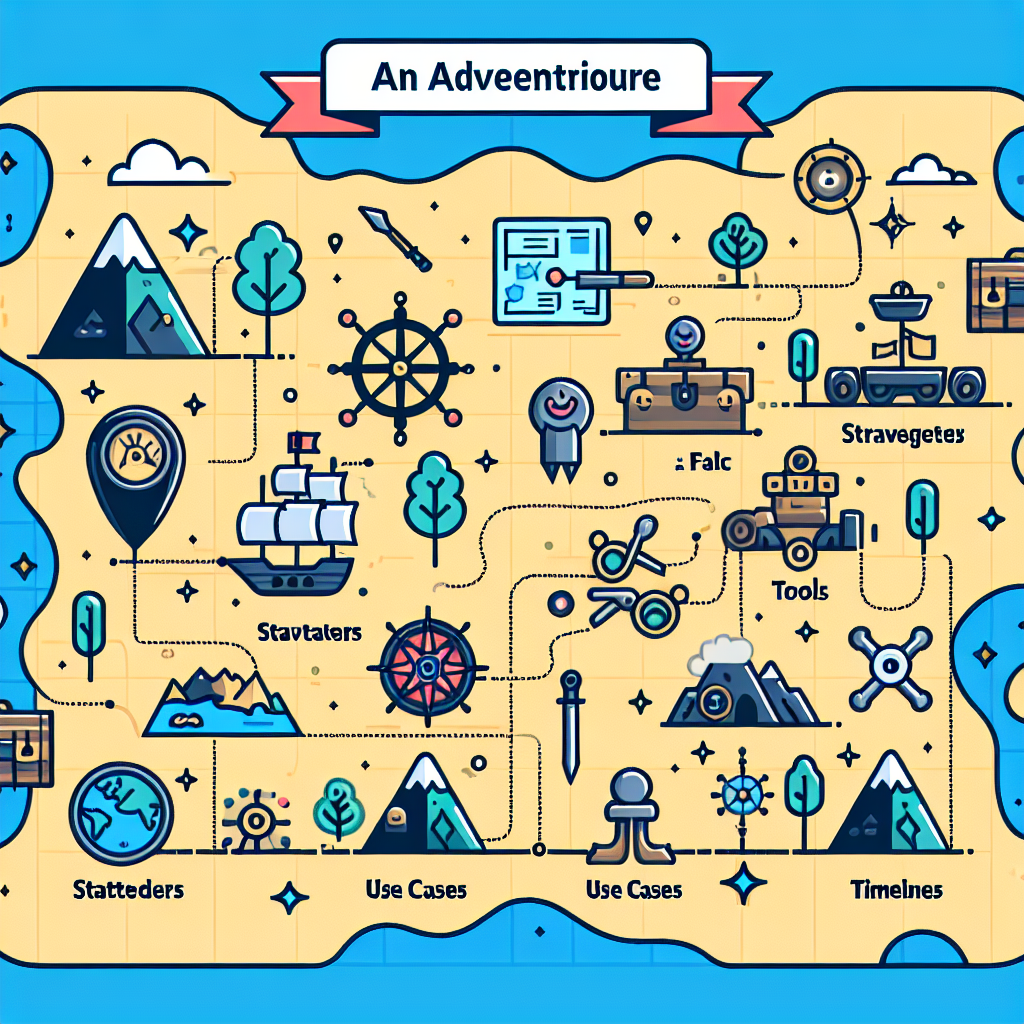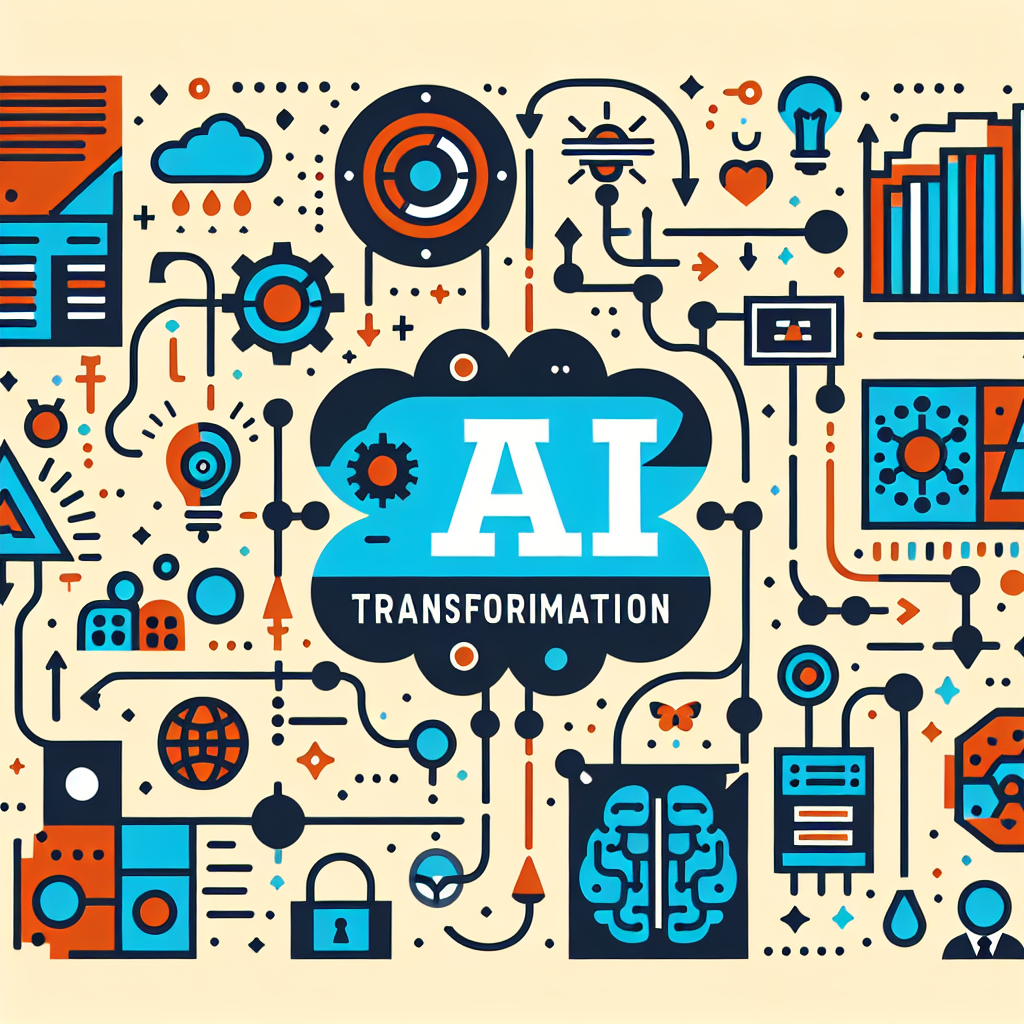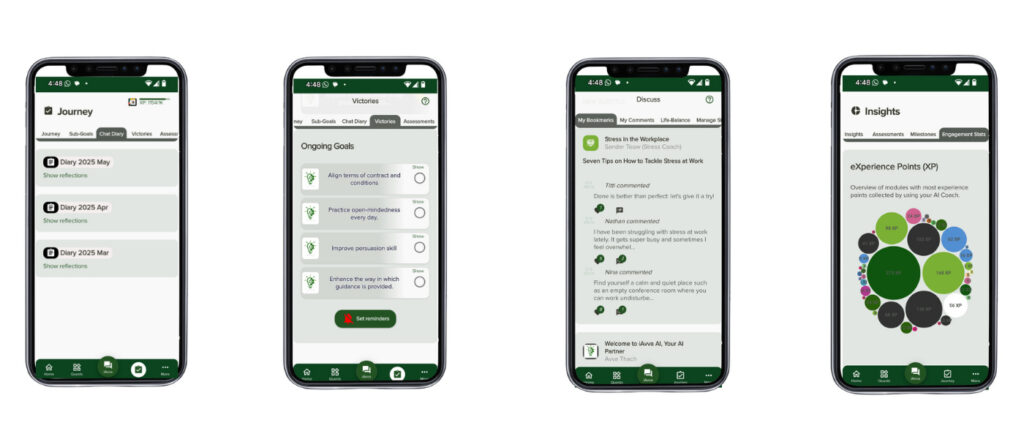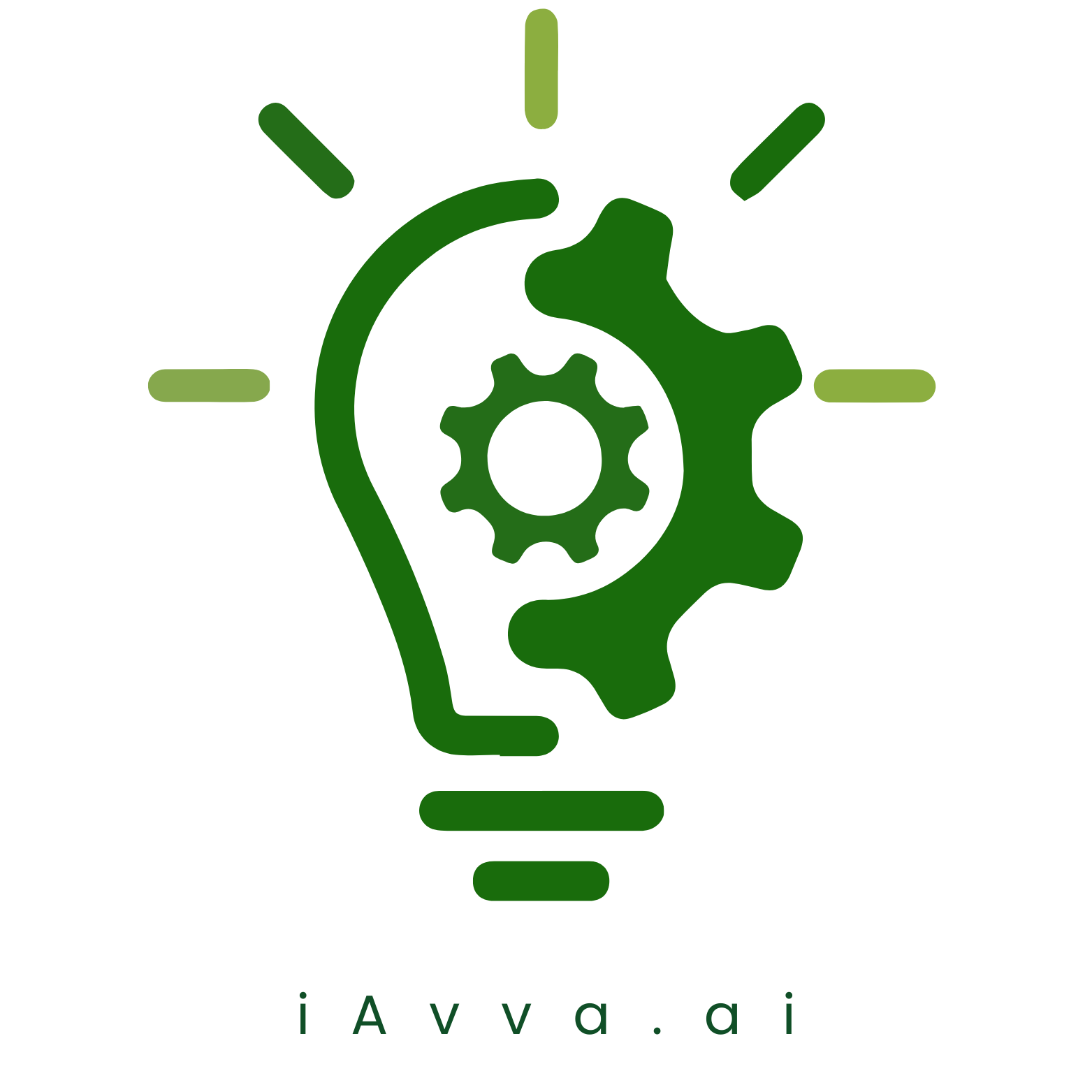From Theory to Practice: Implementing AI Solutions in Your Business
Introduction
Welcome to the brave new world of AI, where your business can transform from a caterpillar into a butterfly if you have the right AI implementation strategy. Implementing artificial intelligence in business isn’t just about jumping on the latest tech bandwagon; it’s about crafting a thoughtful, data-driven strategy that aligns with your organizational goals.
As we dive into this digital transformation journey, let’s face it: many companies are like kids at a candy store when it comes to AI. They want everything but often end up with a stomach ache because they didn’t think through their choices. The key to avoiding that pitfall? A robust AI deployment plan that not only identifies what you want to achieve but also how you’ll get there.
This article will guide you through the nitty-gritty of developing an effective AI integration approach, ensuring your organization is prepared for a seamless transition into the world of intelligent automation. From understanding the fundamentals of machine learning implementation to creating an actionable AI transformation roadmap, we’ve got you covered.
Did you know that as of 2025, over 90% of enterprises will have implemented some form of AI technology? That means if you’re not already planning your AI business strategy, you’re already behind!
So grab your digital toolkit and let’s explore how to turn theory into practice with practical insights and strategies that will set your organization on the path to success. Ready? Let’s get started!
The Importance of an AI Implementation Strategy
When it comes to implementing artificial intelligence in business, having a solid AI implementation strategy is like having a GPS on a road trip it keeps you on track and helps avoid those pesky detours. But what does that really mean? Let’s break it down.
Defining AI Implementation Strategy
An AI implementation strategy is essentially a roadmap that outlines how your organization will integrate AI technologies into its operations. It encompasses everything from initial planning to execution, ensuring that the deployment aligns with your business goals. Think of it as your personal trainer for AI guiding you through each step, making sure you don’t skip leg day!
Benefits of a Structured Approach to AI Deployment
A structured approach to deploying AI offers several benefits:
- Clarity and Focus: With a clear strategy, everyone knows their role and how they contribute to the overall mission.
- Risk Mitigation: By identifying potential pitfalls early on, you can navigate around them like a pro avoiding traffic jams.
- Resource Optimization: A well-planned strategy ensures that resources are allocated efficiently, reducing waste and maximizing impact.
- Enhanced Collaboration: A cohesive plan encourages teamwork across departments, transforming silos into bridges.
The landscape of AI is evolving faster than a cat meme goes viral. Companies that fail to adopt an effective AI deployment plan risk being left in the dust by more agile competitors who understand the importance of strategic planning. So gear up and prepare for action! The journey toward successful AI integration begins with crafting a robust implementation strategy.

Developing Your Artificial Intelligence Strategy
Crafting an AI implementation strategy is like building a house: you need a solid foundation before you can start adding the fun stuff, like smart home devices and automated lighting. So, let’s roll up our sleeves and get to work on your artificial intelligence strategy!
Identifying Business Objectives and Goals
The first step in your AI journey is to pinpoint what you want to achieve. Are you looking to boost efficiency, enhance customer experience, or maybe even predict market trends? Whatever your goals are, they should align with your overall business strategy. Here’s a quick checklist to help:
- Define clear objectives: What specific outcomes do you want from AI?
- Prioritize initiatives: Which goals are most critical for your business growth?
- Involve stakeholders: Get input from various departments to ensure alignment.
Assessing Current Capabilities and Readiness for AI
No one wants to jump into the deep end without checking if there’s water first! Assess your organization’s current capabilities by considering:
- Data readiness: Do you have quality data that can be used for training AI models?
- Technical infrastructure: Is your existing technology stack compatible with new AI solutions?
- Skill sets: Does your team have the necessary skills in data science and machine learning?
Tip: Conduct an internal audit of resources and skills to identify gaps that need addressing before diving into implementation.
The Role of Leadership in AI Strategy Development
Your leadership team plays a crucial role in shaping an effective AI adoption strategy. They should champion the initiative, ensuring that everyone understands the benefits of embracing intelligent automation. Here are some roles they can play:
- Sponsorship: Leaders must actively support AI initiatives at all levels.
- Cultural Shift: Encourage a mindset open to change and innovation.
- Resource Allocation: Ensure that adequate resources are allocated for training and technology investments.
A well-developed artificial intelligence roadmap will not only guide your implementation but also help in operationalizing AI solutions across the organization. Remember, this isn’t just about technology; it’s about transforming how your business operates!
A comprehensive approach ensures that all aspects of your organization are aligned with the strategic vision for AI.
As we delve deeper into creating an effective AI deployment plan in the next section, keep these foundational elements in mind. They will serve as stepping stones toward successfully operationalizing AI solutions tailored specifically for your business needs!
Creating an Effective AI Deployment Plan
Creating an effective AI deployment plan is like crafting a treasure map: you need to know where you’re starting, where you’re going, and the landmarks along the way. Without this clarity, your AI implementation strategy could lead to nothing but wild goose chases!
Mapping Out the Deployment Process
The first step in your AI deployment plan is to map out the entire process. This involves:
- Identifying Key Stakeholders: Who’s in charge? Involve everyone from IT to marketing.
- Defining Use Cases: What specific problems will your AI solutions solve? Think of it as pinpointing the ‘X’ on your treasure map.
- Selecting Tools and Technologies: Choose platforms that align with your goals. This is like picking the right ship for your voyage make sure it can handle the seas!
Establishing Timelines and Milestones for Implementation
No one wants to be lost at sea without a timeline! Establish clear timelines and milestones to keep your project on track:
- Create a Gantt Chart: Visualize tasks, deadlines, and dependencies. It’s like having a clear view of all the islands you’ll visit on your journey.
- Set Milestones: Celebrate small wins along the way these are your pit stops for refueling and adjusting course.
- Regular Check-Ins: Schedule regular meetings to assess progress. Think of these as crew meetings to ensure everyone’s still on board with the mission!
Tip: Don’t forget to allow for flexibility in your timeline! Unexpected waves can arise, so be prepared to adjust as needed.
Avoiding Common Pitfalls
The road to successful AI deployment can be bumpy. Here are some common pitfalls to dodge:
- Lack of Clear Objectives: Without specific goals, how will you know if you’ve reached your destination?
- Poor Communication: Ensure all team members are aligned; miscommunication can lead to disastrous detours.
- Ineffective Training: Prepare your team with adequate training; otherwise, they might find themselves adrift without a paddle.

Your AI deployment plan should not just be a document gathering dust it should be a living roadmap guiding you through uncharted waters toward successful implementation. By mapping out processes and establishing clear timelines, you’ll ensure that you not only set sail but also reach your destination with confidence!
AI Integration Approaches for Seamless Adoption
Integrating AI into your existing systems can feel like trying to fit a square peg in a round hole. But fear not! With the right AI implementation strategy, you can ensure that the transition is smoother than a freshly buttered slide.
Choosing the Right Integration Methods
The first step in successful AI integration is selecting appropriate methods that align with your current infrastructure. Here are some popular approaches:
- API-Based Integration: Allows different software systems to communicate and share data seamlessly. Think of it as the friendly translator at a multi-lingual dinner party.
- Data Pipeline Integration: Involves creating robust data flows that feed your AI models with real-time information, ensuring they stay sharp and relevant.
- Embedded AI: This method integrates AI capabilities directly into existing applications, enhancing their functionality without overhauling the entire system. It’s like adding a turbocharger to your car more power without building a new engine!
Overcoming Common Integration Challenges
No good story is without its hurdles, and AI integration is no different. Here are some common challenges you might face:
- Siloed Data: Often, data resides in separate departments, making it difficult to create a cohesive view for your AI systems. Breaking down these silos is crucial for effective integration.
- Cultural Resistance: Employees may be hesitant to adopt new technologies, fearing job displacement or change fatigue. Building an inclusive culture that embraces innovation can help ease these fears.
- Lack of Technical Expertise: Many organizations struggle with finding talent skilled in both AI and their specific business processes. Investing in training programs or partnering with experts can bridge this gap.
Pro Tip: Regularly communicate the benefits of AI integration to all stakeholders involved this helps foster buy-in and reduces resistance!
The Role of an AI Adoption Strategy
Your success hinges on having a well-defined AI adoption strategy. This strategy should outline how you plan to operationalize AI solutions across various departments while aligning with broader business goals. Consider these key elements:
- Clear Objectives: Define what success looks like for each department involved in the integration process.
- User-Centric Design: Ensure that the AI tools developed are user-friendly and cater to employee needs, facilitating easier adoption.
- Continuous Feedback Loop: Establish mechanisms for ongoing feedback from users to refine and improve the integrated systems over time.
The journey towards seamless AI integration doesn’t have to be daunting. By choosing the right methods and addressing common challenges head-on, you can create an environment where both technology and people thrive together!
Machine Learning Implementation Techniques
Implementing machine learning (ML) in your business is like baking a cake: you need the right ingredients, a solid recipe, and a dash of creativity. The key to a successful AI implementation strategy is understanding how to select and apply various ML techniques effectively. Here’s how you can whip up your own batch of AI goodness!
Selecting Appropriate Machine Learning Models and Algorithms
The first step in your machine learning journey is choosing the right model. It’s crucial to align your model selection with your specific business objectives. Here are some popular models to consider:
- Linear Regression: Great for predicting continuous outcomes.
- Logistic Regression: Perfect for binary classification tasks.
- Decision Trees: Useful for making decisions based on data features.
- Neural Networks: Ideal for complex tasks like image recognition or natural language processing.
Your choice should reflect not only the nature of the problem but also the data at hand. Remember, just like a chef wouldn’t use salt instead of sugar, you don’t want to force a model into a scenario it wasn’t designed for!
Training and Validating Models Effectively
Once you’ve selected your model, it’s time to train it. Think of this as teaching your dog new tricks patience and consistency are key! Here’s how to get started:
- Split Your Data: Divide your dataset into training and testing sets. This helps ensure that your model learns without overfitting.
- Select Evaluation Metrics: Choose metrics that align with your business goals (e.g., accuracy, precision, recall). This will help you measure success accurately.
- Tune Hyperparameters: Experiment with different settings to find the optimal configuration for your model. It’s like finding the perfect temperature for baking too hot or too cold can ruin everything!
- Cross-Validation: Use techniques like k-fold cross-validation to assess how well your model performs across different subsets of data.
The world of machine learning is filled with opportunities, but it also comes with its fair share of challenges. Common pitfalls include misunderstanding data quality issues or neglecting ongoing model maintenance. As you embark on this journey, keep refining both your models and strategies based on new insights and changing business needs.

Your ultimate goal? To leverage these techniques as part of a comprehensive AI adoption strategy that drives efficiency, innovation, and growth within your organization!
The Role of AI Project Management in Successful Execution
When it comes to implementing an AI implementation strategy, effective project management is like the GPS guiding you through a complex landscape. Without it, you might find yourself lost in the weeds of data and algorithms, wondering where it all went wrong. So, let’s break down the crucial elements of AI project management that pave the way for successful execution.
Best Practices for Managing AI Projects
- Define Clear Objectives: Just like a treasure map needs a clear ‘X’ to mark the spot, your AI projects need well-defined objectives. What are you hoping to achieve? Increased efficiency? Better customer insights?
- Agile Methodologies: Implementing agile frameworks can help teams adapt quickly to changing requirements and challenges. Think of it as surfing; you have to ride the waves rather than fight against them.
- Regular Check-ins: Frequent progress reviews keep everyone on track and allow for quick pivots when necessary. It’s like adjusting your sails based on weather changes!
- Risk Management: Identify potential pitfalls early on and develop contingency plans. It’s better to have an umbrella ready before it starts raining!
The Importance of Cross-Functional Collaboration
No successful AI project can thrive in isolation. Cross-functional collaboration is essential for integrating diverse perspectives and expertise. Here’s why it matters:
- Diverse Skill Sets: Combining talents from data scientists, IT professionals, and business strategists creates a robust team capable of tackling complex challenges.
- Enhanced Innovation: Different viewpoints foster creativity and innovative solutions that may not emerge within siloed departments.
- Increased Buy-In: Engaging various stakeholders from the outset ensures that everyone feels invested in the project’s success, leading to smoother implementation.
Did you know? According to recent studies, organizations that prioritize cross-functional collaboration see a 30% increase in project success rates!
The road to successful AI implementation is paved with effective project management practices and collaborative efforts across teams. By adopting these strategies, your organization can navigate the complexities of AI deployment with confidence and clarity.
A Comprehensive AI Transformation Roadmap
Creating a comprehensive AI implementation strategy is akin to plotting a treasure map: you need to know where you’re starting, where you want to go, and the best route to get there. This roadmap is your guide to successfully navigating the choppy waters of AI integration.
Here are the essential steps to craft a strategic roadmap for AI transformation:
- Step 1: Define Your Vision – What do you want to achieve with AI? Whether it’s streamlining operations or enhancing customer experiences, having a clear vision is vital.
- Step 2: Assess Current Capabilities – Take stock of your existing technology and data capabilities. Are your systems ready for an upgrade? Understanding your starting point will inform your AI deployment plan.
- Step 3: Identify Key Stakeholders – Involve cross-functional teams early on. This ensures that everyone is on board, from IT to marketing, and helps in overcoming resistance down the line.
- Step 4: Develop a Phased Implementation Approach – Roll out your AI initiatives in stages. Begin with pilot projects that can be scaled up based on success metrics. Think of it as testing the waters before diving in headfirst!
- Step 5: Establish Metrics for Success – Define what success looks like. Use KPIs related to operational efficiency, customer satisfaction, or revenue growth to measure the impact of your AI initiatives.
- Step 6: Continuous Learning and Adaptation – The world of AI is ever-evolving. Regularly review and adjust your strategy based on performance data and emerging trends in technology.
This roadmap isn’t just about technology; it’s about creating an AI business strategy that aligns with your overall corporate goals. By following these steps, you’ll set yourself up for success in operationalizing AI solutions throughout your organization.

Operationalizing AI Solutions Across the Organization
When it comes to operationalizing AI solutions, think of it as transforming your organization into a well-oiled machine, where every cog knows its role in the grand scheme of things. This isn’t just about throwing some fancy algorithms at a problem and hoping for the best. It’s about embedding AI into the very DNA of your company.
Cultivating a Culture of Innovation
First things first: you need to cultivate a culture that embraces innovation and adaptability. This means fostering an environment where employees feel empowered to experiment with AI technologies without fear of failure. Encourage teams to share their ideas and successes, no matter how small. Remember, even the most groundbreaking innovations often emerge from humble beginnings!
Ongoing Support and Training
Next up is ensuring that ongoing support and training are front and center in your AI adoption strategy. Your employees should never feel like they’re left in the dark when new technologies roll out. Regular training sessions can help bridge knowledge gaps and keep everyone on the same page.
Did You Know? According to PwC, 75% of companies believe effective training is essential for successful digital transformation. Investing in your workforce not only boosts morale but also enhances productivity!
Creating a Feedback Loop
Establishing a feedback loop is crucial for continuous improvement. Encourage teams to provide input on AI tools and processes, allowing you to refine your AI implementation strategy over time. This iterative approach ensures that your systems evolve alongside business needs.
Leveraging Data-Driven Insights
Your data is gold! Utilize it to drive decisions across all levels of the organization. Implementing advanced analytics can help identify trends, optimize operations, and predict future needs essentially turning your data into a crystal ball for business growth.
A Collaborative Approach
Lastly, remember that successful operationalization requires collaboration across departments. Break down silos and encourage cross-functional teams to work together on AI initiatives. When marketing, sales, IT, and operations unite under a common goal, you’ll see synergy that propels your organization forward.
Takeaway: Operationalizing AI solutions isn’t just about technology; it’s about people your greatest asset. By fostering an innovative culture, providing ongoing support, leveraging data insights, and promoting collaboration, you’ll set the stage for successful AI integration that drives measurable growth.
-
- Cultivating a culture of innovation and adaptability for AI adoption
- Ensuring ongoing support and training for employees on new technologies
</ul > </section >
Measuring Success: Metrics and KPIs for AI Initiatives
-
- < li >Identifying key performance indicators (KPIs) relevant to your business objectives< / li >
-
- < li >Evaluating the effectiveness of implemented solutions through data analysis< / li >
-
- </ ul >
-
- < / section >
< section >
< h2 > Conclusion: Embracing the Future with Intelligent Automation< / h2 >
< / section >

















Leave a Reply